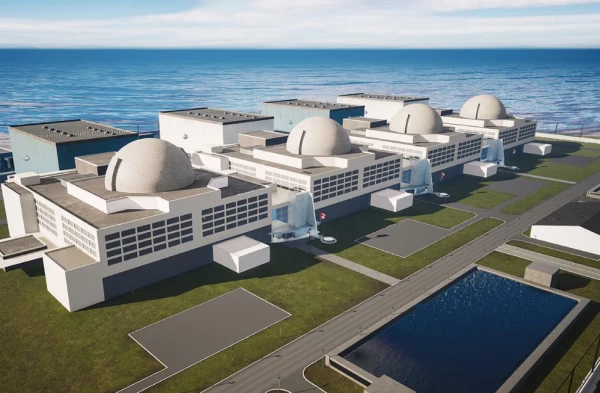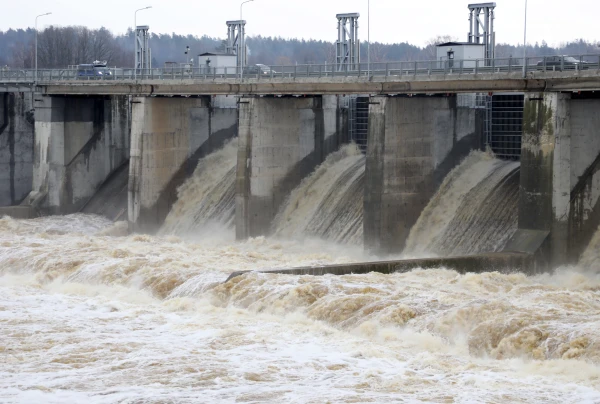
Charging electric vehicles will also require enormous capacities.
The nuclear age began 80 years ago, but the scale of the new technology is so vast that the full disclosure of all its possibilities is only happening today. What will happen in a hundred years? How will atoms change the situation with data centers for AI, why are they predisposed to friendship with electric vehicles and the conquest of other planets? How will it affect our lives in the next century?
Interestingly, unlike semiconductors that replaced lamps in electronics, nuclear energy has not destroyed previous markets and continues to coexist with other forms of generation, even those that are extremely harmful and outdated, like coal-fired power plants. Nevertheless, peaceful nuclear energy has profoundly transformed the energy sector, providing everyone with access to a powerful and low-carbon source of energy—if there is political will and investment. Moreover, the growth rates in France in the 20th century, for example, outpaced the growth rates of solar and wind energy in modern Europe. This means that with the right will and necessary investments, nuclear power plants can develop at the pace of breakthrough technology.
But much more awaits ahead. In the foreseeable future, nuclear energy could change many industries and possibly even displace the technologies we are familiar with today: for example, space rockets powered by chemical engines.
Experts note that by 2026, today’s AI models will consume one gigawatt of electricity, and by 2028, they will consume around 10 gigawatts. Developments in the next phase, strong AI, will require the commissioning of an additional 100 gigawatts of capacity. It is currently impossible to imagine how much electricity will be needed to transition from strong AI to Artificial Superintelligence (ASI), capable of surpassing human capabilities, but it is clear that this will be an increase.
The only sensible solution is the development of nuclear energy for the needs of data centers and AI. For instance, Microsoft has signed a contract to purchase electricity amounting to 835 megawatts, which involves the restart of the famous Three Mile Island nuclear power plant. Amazon has signed an even larger agreement for the supply of nearly two gigawatts of nuclear electricity to power its artificial intelligence data centers and cloud storage in Pennsylvania (USA).
Forecast: over the next 100 years, we will witness the construction of infrastructure complexes combining a giant data center for AI. It is quite logical to expect the emergence of either small modular reactors or, if generative AI shows sufficient energy appetite, larger nuclear power plants with one or several gigawatt energy units.
The coming century will undoubtedly be marked by the growing threat of global warming. And, strangely enough, it will become a major problem for the largest IT companies in the world. After all, data centers are not only voracious consumers of electricity but also, in essence, gigantic furnaces that emit an incredible amount of heat.
One of the largest cost items in the construction and operation of any data center is the creation and maintenance of air conditioning systems. Typically, in data center machine rooms, special equipment is used for cooling—CRAC (Computer Room Air Conditioner) units and CRAH (Computer Room Air Handler) units, as well as air cooling systems on rooftops or centralized air preparation devices. All of these are quite expensive in themselves and also require significant electricity costs to operate.
The cold polar climate helps reduce cooling costs. Therefore, many corporations, such as Google, are actively building their new data centers beyond the Arctic Circle or close to its borders. There, thanks to free cooling technology, excess heat in machine rooms can be removed using icy outdoor air, and seawater can be used to cool servers.
As average temperatures rise from tropical to temperate zones, IT companies will inevitably have to relocate their data centers to the Arctic or to floating stations in the Southern Ocean near the shores of Antarctica. However, since there is no developed energy infrastructure there and will not be, small modular reactors (SMRs) will be required to service them.
In all developed countries, a unified daily structure of energy consumption can be observed: after a brief morning peak, there is a daytime decline, followed by a prolonged evening peak, which is then replaced by a long nighttime decline. These fluctuations create a load on the power grids and require energy suppliers to maintain a balance between production and demand. This is a non-trivial task, so many different strategies have been developed to address it.
Nuclear power plants operate in a mode known in the energy sector as base load: they generate energy both day and night. This scheme will be suitable for a future with many electric vehicles. From the perspective of electric vehicles as consumers, the most efficient scheme is when nuclear power plants, instead of reducing output after daytime peaks, supply electricity to charging stations near homes where electric vehicles owned by private individuals are parked. For such consumers, it is economically more efficient for nuclear power plants to operate 24/7. Why?
If electric vehicles start charging en masse at the same times that other consumers are using electricity, they will instantly hit the limits of the substations' capabilities.
Take a residential building with a thousand apartments. Many charging stations with two outlets each can be installed in the parking lot nearby, and this will cost only a hundred dollars per outlet. But what happens when 500 electric vehicles in the parking lot start charging simultaneously?
In the evening or morning, this will provoke a mini-collapse: up to a megawatt of power supplied to the building will be occupied by electric charging. The activation of electrolyzers, air conditioners, and similar devices in the apartments under such conditions may lead to network overload and local outages. It is possible to change the equipment at the local substation, but will it then be necessary to change the underground cables running from it to the building? How much will all this cost?
It's a completely different story if electric vehicle charging is limited to nighttime hours— for example, through sharply reduced nighttime tariffs. At night, the substation in residential areas is barely loaded, simply idling almost without work. Now it can transmit electricity from nuclear power plants to consumers who are most active at night.
<iframe width="560" height="315" src="https://www.youtube.com/embed/uMnudn5Qx24?si=yITJhvyl5FGgGSm2" title="YouTube video player" frameborder="0" allow="accelerometer; autoplay; clipboard-write; encrypted-media; gyroscope; picture-in-picture; web-share" referrerpolicy="strict-origin-when-cross-origin" allowfullscreen></iframe>












